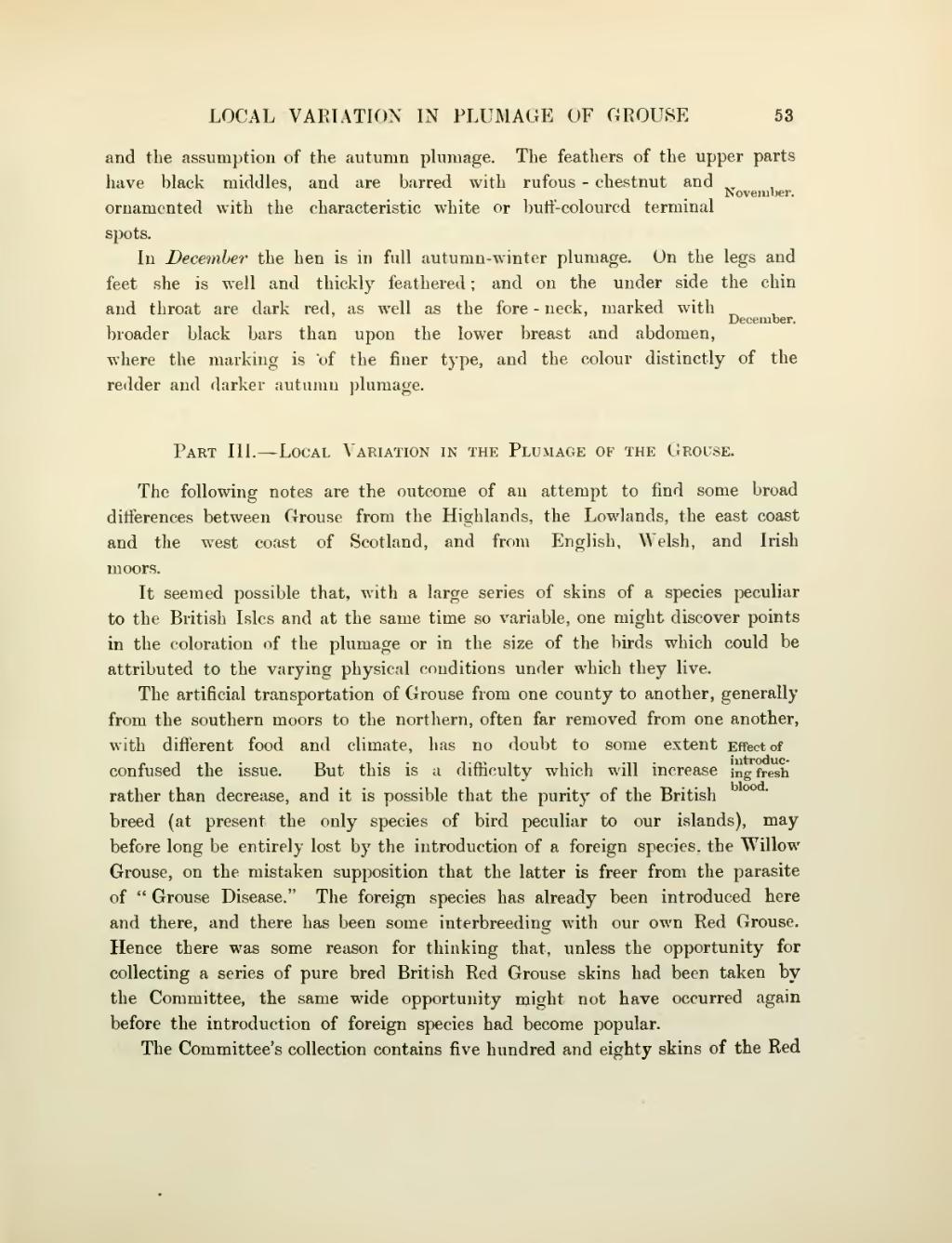and the assumption of the autumn plumage. The feathers of the upper parts have black middles, and are barred with rufous-chestnut and November. ornamented with the characteristic white or buff-coloured terminal spots.
In December the hen is in full autumn-winter plumage. On the legs and feet she is well and thickly feathered; and on the under side the chin and throat are dark red, as well as the fore-neck, marked with December. broader black bars than upon the lower breast and abdomen, where the marking is "of the finer type, and the colour distinctly of the redder and darker autumn plumage.
Part III. — Local Variation in the Plumage of the Grouse.
The following notes are the outcome of an attempt to find some broad differences between Grouse from the Highlands, the Lowlands, the east coast and the west coast of Scotland, and from English, Welsh, and Irish moors.
It seemed possible that, with a large series of skins of a species peculiar to the British Isles and at the same time so variable, one might discover points in the coloration of the plumage or in the size of the birds which could be attributed to the varying physical conditions under which they live.
The artificial transportation of Grouse from one county to another, generally from the southern moors to the northern, often far removed from one another, with different food and climate, has no doubt to some extent Effect of
introducing
fresh
blood. confused the issue. But this is a difficulty which will increase rather than decrease, and it is possible that the purity of the British breed (at present the only species of bird peculiar to our islands), may before long be entirely lost by the introduction of a foreign species, the Willow Grouse, on the mistaken supposition that the latter is freer from the parasite of "Grouse Disease." The foreign species has already been introduced here and there, and there has been some interbreeding with our own Red Grouse. Hence there was some reason for thinking that, unless the opportunity for collecting a series of pure bred British Red Grouse skins had been taken by the Committee, the same wide opportunity might not have occurred again before the introduction of foreign species had become popular.
The Committee's collection contains five hundred and eighty skins of the Red

